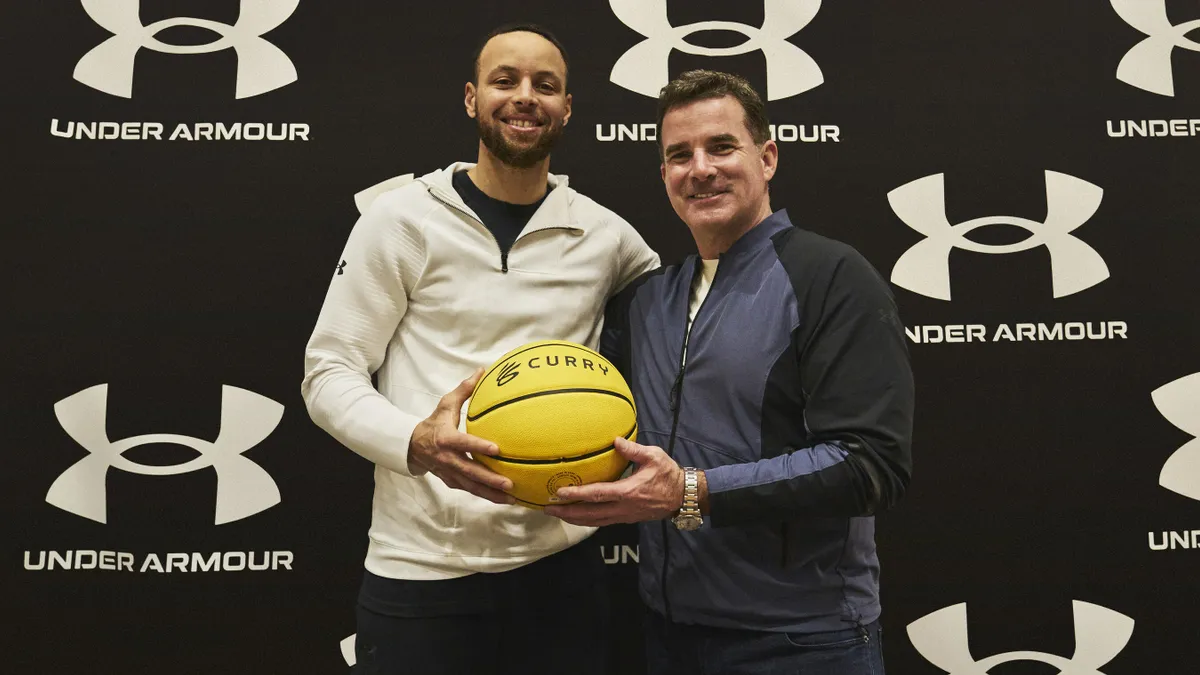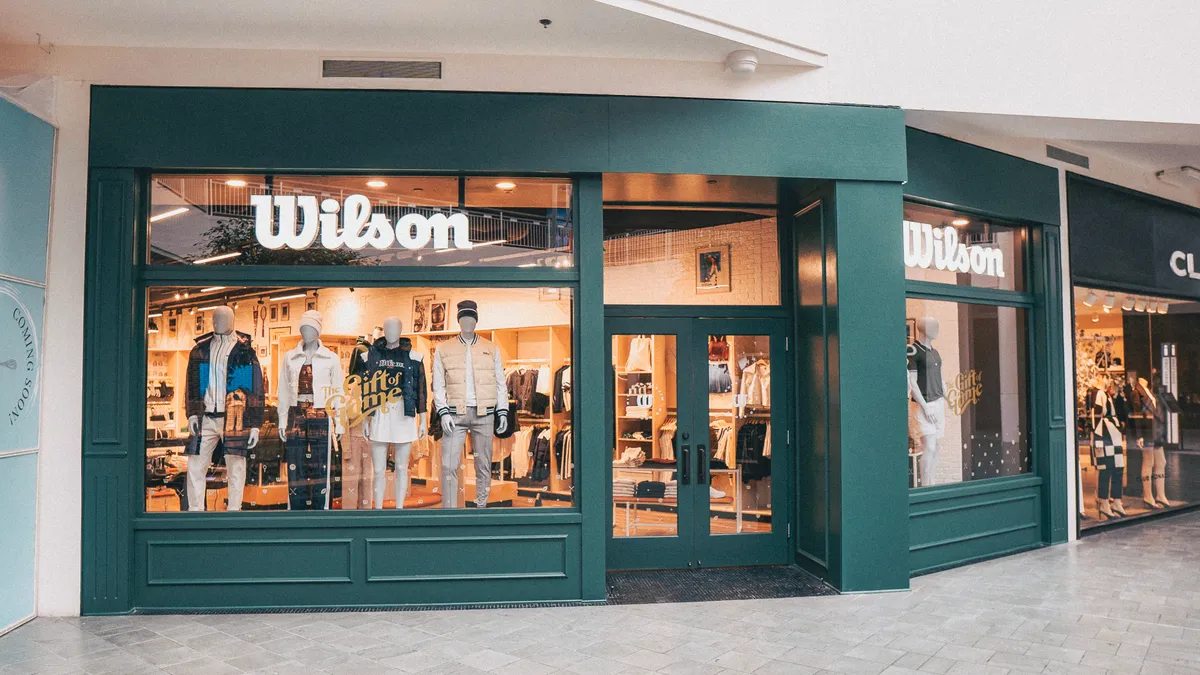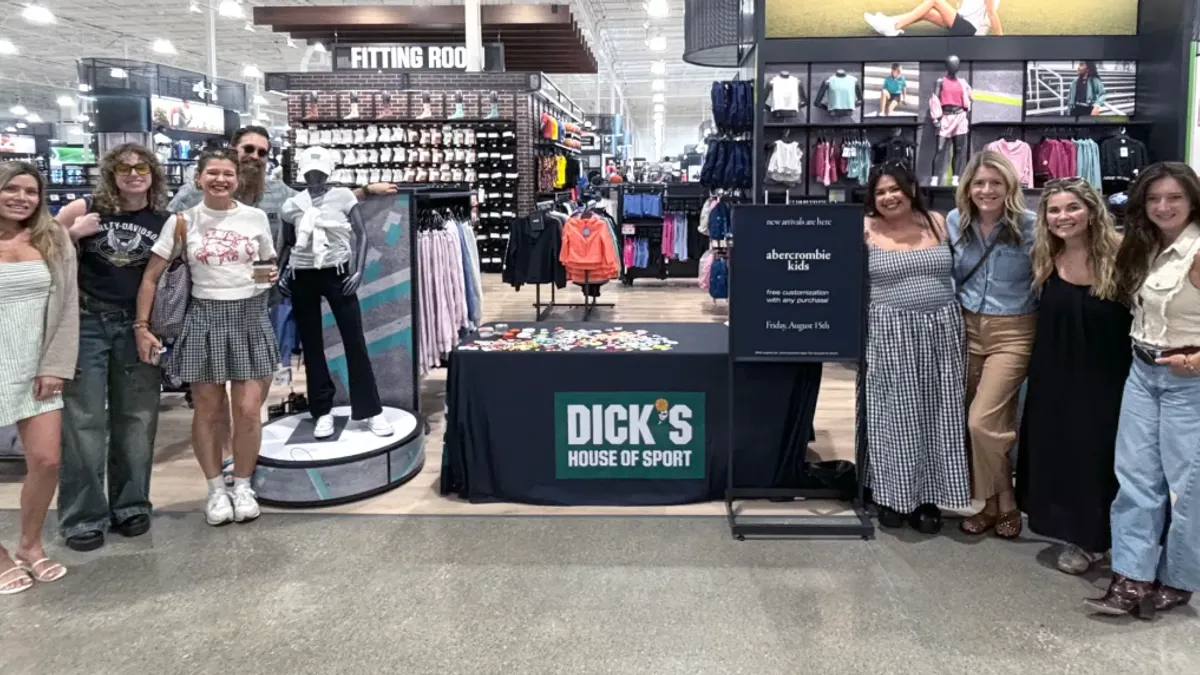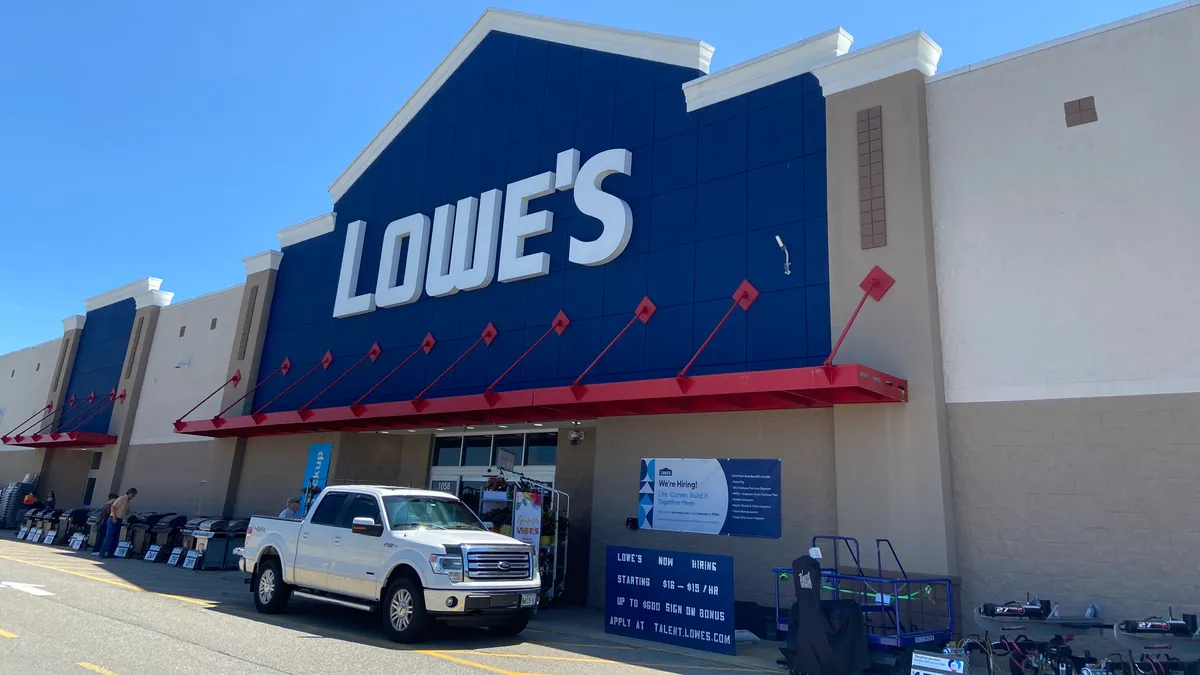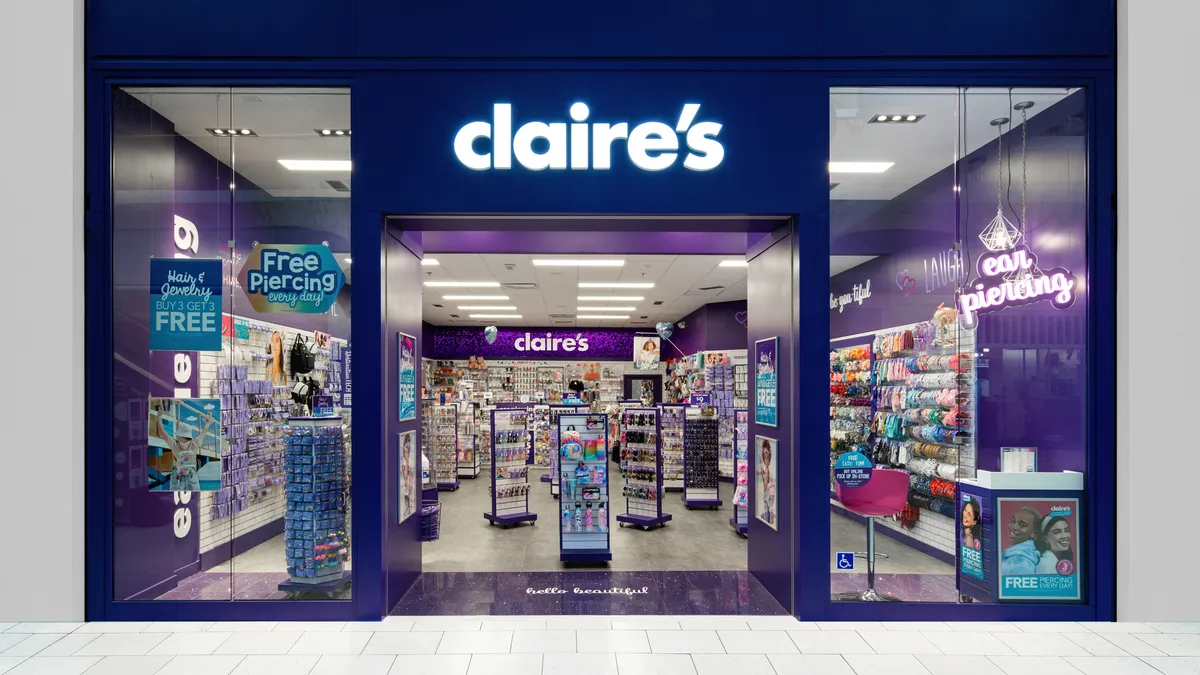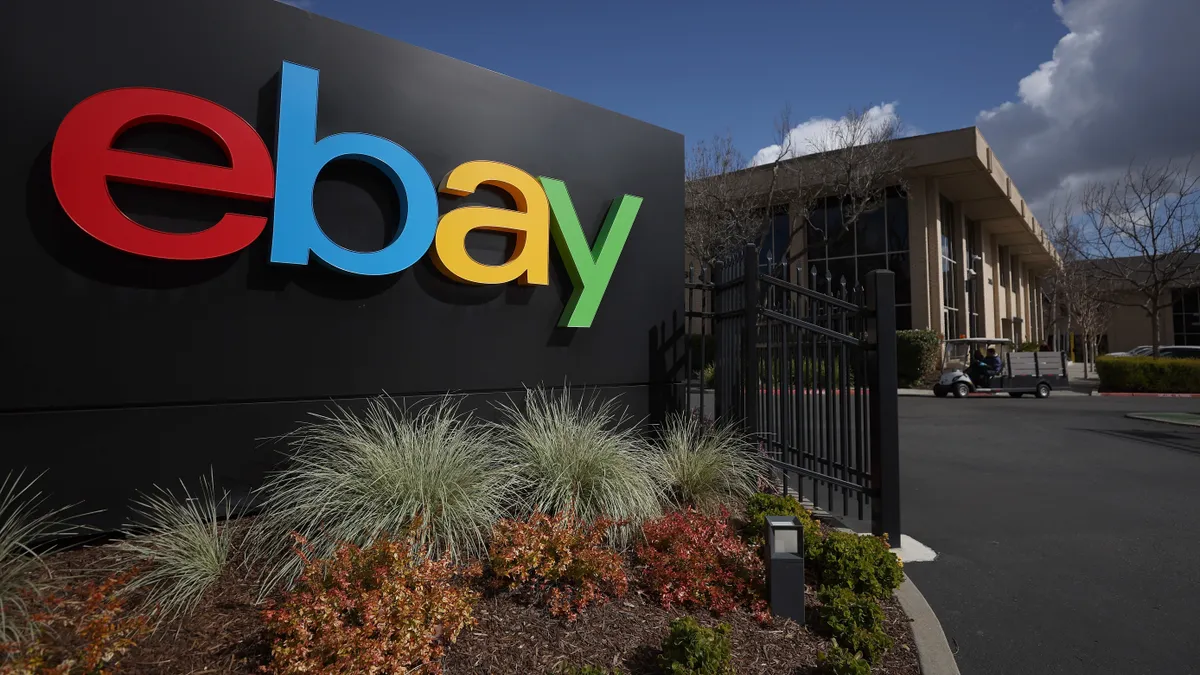Under Armour lost its second permanent CEO in two years this March when Stephanie Linnartz stepped down. But instead of continuing the search for Kevin Plank’s replacement, who himself just relinquished the CEO role four years ago, the brand announced that its founder and then-executive chairman would once again helm the company.
Why? According to Plank’s first call back as CEO, the company wasn’t achieving its ambitions.
“Our goal has always been to be a premium brand of choice, driven by industry-leading athletic performance products, inspirational storytelling, and elevated consumer experiences,” Plank said, according to a Seeking Alpha transcript. “Yet, we have not consistently nor holistically delivered on this ambition.”
Plank cited high turnover in the CEO spot, along with other key roles, as part of the problem. But all that turnover in the top spot is likely Plank’s doing, analysts said.
“Kevin's always had a problem handing off the reins of the company,” Matt Powell, senior adviser with BCE Consulting, said. “And the board is Kevin's board, and so if Kevin wants to make a change, the board pretty much signs off on that.”
Wedbush’s Senior Vice President of Equity Research Tom Nikic agreed, saying he thinks Plank wanted to be in charge and “the idea of ceding control to somebody else just ended up not being appealing to him.”
A spokesperson from Under Armour said Plank was not available for interviews.
As the brand’s founder and CEO from 1996 to 2019, the executive has spent far longer running the company than not. And it grew to a $5 billion business under his leadership, which is nothing to scoff at in the athletics space. Still, in recent years competitors like Lululemon have surged far ahead of the athletics brand, with Lululemon almost doubling Under Armour’s revenue in 2023 (and that’s only two years after Lululemon first overtook Under Armour).
“It clearly was not meeting his expectations. You can see that from his commentary,” Powell said of Under Armour’s performance recently. “He has a vision, although I'm not sure I fully understand what that is at this point, but he has a vision for what Under Armor ought to be.”
If that vision pans out, and Under Armour sees strong growth and profits again, Plank is likely in the CEO role for the long run. If it doesn’t, then Plank’s position should be a temporary one, Powell said.
CEO succession at Under Armour
-
1996-2019Founder Kevin Plank serves as CEO and board chairman.
-
2020Plank steps down from the CEO post, making room for COO Patrik Frisk to take on the top spot. Plank becomes brand chief and executive chairman.
-
2022Frisk steps down from the CEO role, with COO Colin Browne taking over the interim CEO post while the company searches for a permanent replacement.
-
2023Stephanie Linnartz takes on the CEO role in February, taking over for Browne.
-
2024Linnartz steps down from the CEO role and Under Armour announces Plank will return as CEO.
“I think it was the right thing for him to do, to step aside. And I'm very curious to see how all this is going to play out now,” Powell added, noting that finding the brand’s next CEO might be harder, if it comes to that. “I'm not sure, after what's happened with the previous CEOs, that there's going to be a lot of appetite for people to come in and take on that challenge.”
If Plank is to turn Under Armour around, it’ll take more than just willpower, analysts said. It’ll take a firmer brand identity, stronger product and something that Plank isn’t known for: patience.
“Historically, something that takes, let's say, 18 months — he's trying to do it in seven,” Sam Poser, equity analyst at Williams Trading, said. “When that happens, something gets good for a minute and then it blows itself up all over again.”
Click clack
Under Armour launched in 1996 with a sweat-wicking T-shirt, followed it up a year later with a cold-resistant shirt and hasn’t stopped focusing on performance since. An Under Armour spokesperson in July told Retail Dive the brand is “rooted in performance-driven innovation” and that this “continues to be a core focus.”
“We have developed hundreds of patents for technology through the years designed to enable athletes to perform at the top of their game,” the spokesperson said. “These technologies are at work across our footwear, apparel, and accessories.”
And the strategy worked well for a while. In the early 2000s, when Under Armour was still making revenue in the low millions, the brand was posting 100%-plus annual growth. That moderated in the years that followed, as is expected when revenue increases, but Under Armour still grew by double-digits throughout much of the 2000s and 2010s.
In 2017, Under Armour's annual revenue growth dropped to just 3%
The company went public in 2005 and launched its first footwear in 2006. The offering, which was a pair of football cleats, captured 23% of market share in their first year, according to Under Armour. Poser still remembers the ad that went alongside those shoes, which focused on the click clack sound a pair of cleats makes when athletes walk through the tunnel and onto the field.
“They didn't really have to talk about the product. They were basically saying, ‘We get you,’” Poser said. He noted that the cleats “weren’t particularly good,” but that every football player can relate to the experience of walking through the tunnel and onto the field.
In more recent years, Under Armour has lost some of that emotional connection it once had, Poser said, and instead leaned hard into advertising the performance attributes of its products.
And for a time, performancewear was in. About 10 years ago performancewear, which Under Armour has steadfastly stuck by for decades, was more popular than athleisure, Powell noted, with performance heritage brands “really in ascension.” It was the perfect environment for Under Armour to thrive in.
“That 2010 to 2015 timeframe — that was obviously a very strong, strong period for them,” Nikic said. “[But] there were some aspects of the business that just aren't comparable to today.”
For example, Under Armour at the time was expanding distribution in Dick’s Sporting Goods and signed Steph Curry, the latter of which Nikic likened to catching “lightning in a bottle.”
“It was almost a badass brand, right? Where you can imagine a big, tough, muscular, tough guy, would wear Under Armour stuff,” Nikic said. “There was a brand image. There was product that went behind it. There was growing distribution. So there was just a lot of stuff working — and then they just hit a wall.”
The rise of athleisure — and the fall of Under Armour
Sometime between 2016 and 2017, the Under Armour growth surge stopped. Revenue jumped 22% one year and edged up just 3% the next. Rather than an anomaly, it proved to be the new normal. Under Armour’s revenue has grown less than 5% — or declined — each year since then, except for the post-pandemic bounceback in 2021.
What went wrong to stop the tide of growth? An obvious place to point the finger is athleisure. The idea of athleticwear that can easily be adopted as everyday attire has buoyed Lululemon and others for years, but when the concept really took off in the mid 2010s, it “caught Under Armour flat-footed,” according to Nikic. The company continued to emphasize performance in the years that followed, even as growth slowed and other competitors pivoted.
In recent years, Lululemon has surged ahead of Under Armour
Under Armour still doesn’t really have an answer for the trend, though it’s been stressing “sportstyle” more in recent quarters. Former CEO Linnartz described the category earlier this year as the “intersection of performance and style,” and the company seems to be continuing to pursue it under Plank — at least so far.
“Our vision for the future of Under Armour is to continue to innovate for our athletes who are incredibly talented and diverse, and we know what they wear on the field is as important as what they wear off the field, so we are evolving,” an Under Armour spokesperson said, noting the company relaunched a sportswear-specific Instagram channel recently. “We’re leaning into sportswear to round out our athlete innovation and provide 360 inspiration for performance wear and lifestyle attire.”
That wasn’t the only obstacle that led up to Plank’s initial departure in 2020, though. Another — potentially bigger — problem than the rise of athleisure was a series of decisions that cheapened the Under Armour brand. In pursuit of top-line growth, Under Armour went deep into the outlet business and became well-known for heavy promotions. The company also failed to segment its wholesale business properly, at one point offering the same products at Dick’s Sporting Goods and Kohl’s at different price points, according to Poser.
“They took the same product, charged a different price for it and basically short-shrifted the better customer that they had before,” Poser said. “That better customer said, ‘Why do I need to pay full price for this anymore? I’ll just go to Kohl’s if I want it.’ But then, because [Under Armour] was at Kohl’s, it lost luster as a brand.”
The lack of consumer demand for Under Armour products has also impacted how the brand’s wholesale partners treat it. Dick’s Sporting Goods used to give Under Armour more prominent placement in its stores, but has since pushed the brand to more secondary areas, Powell noted. Part of that problem is that Under Armour doesn’t resonate with teen shoppers the way other athletic brands do.
“Studies have shown that they overindex with young people and people over 35 — so essentially, the middle school kid and his dad,” Powell said, adding that Under Armour underindexes with teens, “which is, of course, where the epicenter of the sports shoe business, sports apparel business really exists. And this is something they've never really addressed. So I think things are going to continue to be a challenge until they, first of all, admit that this is a weakness — and develop a strategy to counter this trend.”
In the wake of these challenges, analysts reacted well to Plank’s announcement in 2019 that he planned to step down. Patrik Frisk, who had been chief operating officer at the company for a couple of years, was lauded as a wise choice to succeed him and did a lot to improve the company operationally. But just two years later, he was out, with many speculating he didn’t drive enough growth for Plank’s preference.
“Patrik's hire was very well received and Patrik's departure was very poorly received by the market, which kind of tells you what you need to know,” Nikic said. “I think the investment community was very excited to see what somebody else could bring to this brand. … This is a company and a brand that just needed an injection of newness — and we got it with Patrik, and then all of a sudden, we didn't have it anymore.”
What followed was an interim period under then-Chief Operating Officer Colin Browne and then, early last year, the beginning of Linnartz’s tenure. For the brief period of time she was there, Linnartz launched Under Armour’s first loyalty program and made what Powell called “necessary reductions” in payroll. She also was in the midst of a sweeping overhaul of the company’s management and talked often about the company’s need to improve product design. The company’s sales grew 3% in 2022, the year before she started, and fell 3% in 2023, the year she was there.
“I guess Kevin decided, ‘Hey, if somebody's going to stick around for four or five years, why not have it be me?’”

Tom Nikic
Senior Vice President of Equity Research at Wedbush
“I don't think you can necessarily fault Stephanie for anything operationally or fundamentally or financially that's happened at the company,” Nikic said, “because, quite frankly, she wasn't there long enough to actually do anything.”
Poser said he admired that Linnartz seemed to be taking her time with the brand rather than demanding immediate results. Under Armour didn’t comment on the reasoning behind her swift departure, besides the release they put out when she left. Each analyst Retail Dive spoke to said it was likely because Plank wanted to be in control again.
“My guess is he said, ‘Hey, I gave this a shot. I let other people run the company for about three years. I really didn't like it. I'm the controlling shareholder. I'm here for the long run now,’” Nikic said. “I would be very surprised if we saw anybody other than Kevin Plank serving as CEO of this company anytime in the foreseeable future.”
That is especially likely given how turbulent the last few years have been in Under Armour’s top spot.
Even when other people were running the company, Plank’s hand was visible throughout. As brand chief at Under Armour, it was Plank who posed for a picture with basketball star Curry to celebrate their renewed partnership in 2023, not Linnartz, who had taken over the CEO spot a month prior. And Plank has also been the brand’s executive chairman since 2020, meaning there weren’t many big decisions under Frisk, Browne or Linnartz that he wouldn’t have known about.
“I guess Kevin decided, ‘Hey, if somebody's going to stick around for four or five years, why not have it be me?’” Nikic said.
The question now is whether or not that’s a good thing.
What Under Armour actually needs
Like those before him, Plank has a plan for Under Armour’s turnaround. It includes concrete initiatives like cutting SKUs by 25% and shortening the go-to-market timeframe. But the success of Under Armour’s turnaround might rely on more nebulous concepts like improving product and brand resonance.
“I think they're facing a little bit of an identity crisis, where it's sort of like, ‘What are we known for?’” Nikic said. Initially, it was base-layer clothing like that first sweat-wicking T-shirt, a category which Plank said on the brand’s recent earnings call it would once again focus on. But what about beyond that? “That's a pretty niche product. If you're going to be a bigger player in the athletic space — which Kevin Plank and Under Armor aspires to be — you have to be something more than that.”
Nikic recalls an investor day in 2018 when Under Armour proudly told attendees that the company still hadn’t created its defining product.
“They were kind of trying to put that forth as an opportunity. Like, ‘Hey, we've done what we've done so far without even having a defining product. Once we find our defining product, look out world! We're going to take over,’” Nikic said. “But we're sitting here now, six years later, and they still haven't found their product.”
Under Armour knows product and brand improvements need to be its focus. According to a company spokesperson, Under Armour’s top priority over the next year and a half is “to bring clarity and stability to the business” through “focusing on brand-building fundamentals, like making great products [and] telling the best story about those products.”
As for how Under Armour is going to improve product, the retailer is doubling down on innovation and developing premium performancewear. The brand tests all of its technologies in its innovation lab before they make it to market, the spokesperson said, with over 300 possible lab tests to verify quality and performance.
“Our goal is to create performance solutions our athletes never knew they needed and, once they have them, can’t imagine living without,” the spokesperson said, echoing a phrase frequently repeated by Under Armour executives on earnings calls.
But stressing the performance value and technical aspects of its products may not be the best way to sell clothes. Even performance products sell because of the emotional connection a brand makes with the customer, Poser said, and Under Armour has lost sight of that. Some of performance wear’s strongest success stories come from the appearance of the product, according to Poser, like Nike’s iconic moment in 1996 when Olympic sprinter Michael Johnson wore gold track shoes to compete. Poser also noted that Adidas’ AlphaBoost shoes were originally geared at runners, but ended up taking off as a lifestyle shoe after they were adopted more casually.
“Basically, what they were saying was, ‘We've done a lousy job of this.’”

Sam Poser
Equity Analyst at Williams Trading
Under Armour tried several years ago to insert itself into the fashion conversation, but the efforts went nowhere, according to Nikic. The brand’s focus on “sportstyle” now could be another acknowledgment of the limits of a strict technical approach, but the brand missed the athleisure boat long ago and competition is much more intense now, according to Powell.
And while the company acknowledges the need for off-the-field product, Plank in other ways is going back to the brand’s core. The executive in May said he would refocus the brand on men’s apparel after trying for years to develop a more robust women’s and footwear business.
“It would not surprise me if [Plank] went back to the performance roots because that's what built this brand, was really focusing on performance at a time when performance was a very important fashion story,” Powell said. “But the fashion spinner moves on its own mind and you don't force it. You have to follow it. And I think they didn't when they should have.”
As a result, Under Armour has very little resonance with teens, who are driven by fashionable styles and retro products, according to Powell. Under Armour’s athletes too, which include Jordan Spieth and Tom Brady, aren’t as relatable to younger consumers. Even Curry, one of the NBA’s most impressive players, is “sort of boring” as a personality, Poser said. Under Armour signed a new multiyear contract with the basketball star last year, but they still haven’t found a strong way to capitalize on that partnership, according to Poser.
The company has stated its intention in recent years to focus on 16- to 24-year-olds and identified that age range as its target demographic, but that’s the audience every athletics brand is focused on — and it should already have been Under Armour’s target demographic, analysts said.
“It's a good idea, but it's something they shouldn't have to say,” Poser said. “Basically, what they were saying was, ‘We've done a lousy job of this.’”
To tackle that, Under Armour has invested deeply in new hires, particularly in product and design roles. While one of Linnartz’s hires, Chief Consumer Officer Jim Dausch, is leaving since Plank’s return, Under Armour’s founder seems largely happy with the slate of executives the brand has accumulated recently. The company now has 26-year Adidas veteran Eric Liedtke to tackle brand strategy, and over the past year or so tapped John Varvatos as chief design officer, Yassine Saidi as chief product officer and Kara Trent as head of the Americas.
Plank touted on the brand’s most recent earnings call in August that the company had one of its strongest product teams to-date and was making decisions to ensure it was selling more than “just a logo” on a T-shirt. But even if better product is on the horizon, Under Armour will have to continue to fight the perception of itself as a discount brand. And that might mean fewer sales in the near term, Powell said.
“It takes great product to convince people to pay full price for it,” Powell said. “If you've educated the consumer to go one way, it takes a long time to reeducate them to go in a different way, and often it means you're going to do less business. And again, that's a big hazard for a lot of brands.”
Plank seems aware of the challenges Under Armour is facing. But he wasn’t able to overturn them before he gave up the reins in 2020 — and three other CEOs in between now and then haven’t been able to do it, either. Is there anything that makes this time different?
“I think he knows what he needs to do,” Poser said. “The question is, does he have the patience to be able to do it?”
Poser asked much the same question on the brand’s latest earnings call. At first, Plank joked that he’d just turned 52 and had been “growing and maturing” over the years. But a longer response showed more introspection on his history as a leader.
“As an entrepreneur, you always feel late. You feel like it's got to be done tomorrow. And that's something which has been somewhat of a strength — and at times it can be difficult, especially as you get large and need to scale as an organization,” Plank said. “I think really it's the maturity of just recognizing the hand that we have … I've had a pair of twos and we've had a royal flush before, and today we have neither, but we've been able to win with both.”



